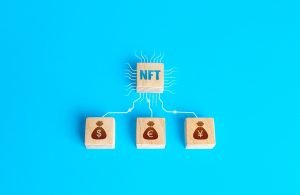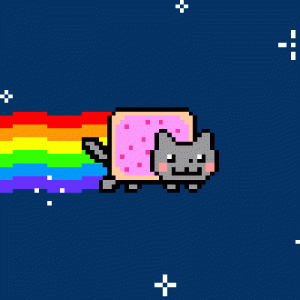What Are NFTs Used For?

Artists and content creators have a unique potential to monetize their work thanks to blockchain technology and non-fungible tokens (NFTs).
When it comes to selling their artwork, artists no longer have to rely on galleries or auction houses.
An NFT, can be sold directly to the consumer by the artist and allows them to keep a larger portion of the revenues.
Apart from that, artists have the option of programming royalties into their artwork so that they receive a percentage of revenues every time their work is sold to a new owner.
This is a desirable feature because, in most cases, artists do not get any future proceeds after their artwork has been sold.
Art isn’t the only method to generate money with NFTs; there are other options as well.
Brands such as Charmin and Taco Bell have auctioned off themed NFT paintings in order to raise revenue for charitable causes, among others.
“NFTP” (non-fungible toilet paper) was christened by Charmin, and Taco Bell’s NFT art sold out in minutes, with the highest bids coming in at 1.5 wrapped ether (WETH), which is equal to $3,723.83 at the time of this publication.

Nyan Cat, a GIF depicting a cat with a pop-tart body created in 2011, sold for nearly $600,000 in February.
In addition, as of late March, NBA Top Shot had produced more than $500 million in sales.
A single LeBron James highlight NFT sold for more than $200,000 at an auction in New York.
A growing number of celebrities, including Snoop Dogg and Lindsay Lohan, are hopping on the NFT bandwagon and issuing securitized NFTs that contain unique memories, artwork, and moments.
we know this particular question is now on your mind, feel free to ask away!
Are NFTs going to become as long lasting as cryptocurrencies?
It is said that timing is everything.
And just as the growing general acceptance of cryptocurrencies has gathered momentum, non-financial tokens (NFTs) have appeared and riding that momentum into places we could never have imagined.
The art world is the first industry that has been influenced by it.
In the years 1508 to 1512, Michelangelo painted the ceiling of the Sistine Chapel, working on it with handmade scaffolding in conditions that the cardinals said were intolerably dusty and noisy.
Now, you may create a PNG or JPEG of Pixel art or a previously created digital piece, photograph, or even tweet your creation.
You may make thousands in a day or two.
In addition, NFTs have improved the accessibility of art, its collectability, and its visibility.
It is estimated that we will experience 20,000 years of technical progress in the next 100 years.
People in their 20s and younger will have the opportunity to witness things that even modern science fiction couldn’t envisage.
Secondly, NFTs have had an impact on the media industry;
Artists are selling their music and music videos as NFTs, making hundreds of thousands of dollars, such as Grimes’ 50-second video, which sold for a whooping $388,938.00
Deadmau5, Grimes, 3Lau, Jacques Greene, Tory Lanez, and Kings of Leon are among the artists who have signed up to participate in the NFT.
3Lau’s recent sale brought in $11.3 million through an NFT auction, according to the company.
NBA Top Shot is a company that mints and sells NBA film in the form of NFT clips. According to its inventor, Dapper Labs, the NBA’s Top Shot product is a blockchain-based trading card system that has produced more than $230 million in gross sales since its launch in 2015.
In recent times, NFTs have had an impact on the physical world:
It appears that you may mint a building, or any other physical item for that matter.
In order to address rising interest in everything from cryptocurrency to altering classic investments such as real estate, State Street Corp etc.
A worldwide mega money management firm, is relocating hundreds of its employees to a new digital subsidiary.
Tokenization of physical goods creates a digital share of ownership in the item’s digital representation.
It is a novel approach to releasing liquidity.
And to imagine that NFTs are still in their infancy or early stages of development.
NFTs are an example of two converging technologies, blockchain and digital art, that would have been considered science fiction 20 or 30 years back.
Therefore, we can boldly say in summary that NFTs (Non-Fungible Tokens) are a technology that enables artists, designers, and other creators to register their work in an open marketplace in a unique manner using a digital signature.
That provides access to and the chance to purchase their works to people all around the world.
Why Are Brands Using NFTs?
Initially, NFTs were utilized by artists who sought to maintain control over the sharing and dissemination of digital artwork.
Artists such as Beeple and FEWOCiOUS have gained millions of dollars by selling their work as NFTs
Brands, on the other hand, are swiftly catching on to the trend and developing NFTs of their own—though for very different reasons.
The following characteristics of these digital assets are emphasized by the majority of branded NFTs:
-
NFTs are a kind of expression
Owning a unique piece of art, song, or virtual clothing or real estate and knowing that it can’t be copied gives people a sense of uniqueness.
-
NFTs runs on scarcity
While one person might buy an NFT Gucci to show off, another person buys it because they think the item’s value will go up in the future. Given that NFTs aren’t made very often, they’re not bad investments.
-
NFTs run the metaverse
That fancy “Metaverse” notion you’ve been hearing a lot about lately?
That’s right. It has already arrived.
Users can purchase virtual residences and clothing in virtual worlds such as Decentraland, and they can even create complete lives online in virtual worlds such as Second Life.
In order for the Metaverse to continue to flourish, more individuals will spend more time in virtual worlds, necessitating the need for virtual assets, such as NFTs, that can be used in these virtual realms.
-
NFTs increases brand awareness and consumer loyalty.
Purchasing branded NFT is likely the most significant endorsement that customers can provide to organizations. This is especially true for limited-edition NFTs that are only offered to a small number of buyers.
Finally, how does an NFT work? keep reading!
Click on page 5 or the next page button to continue reading!

